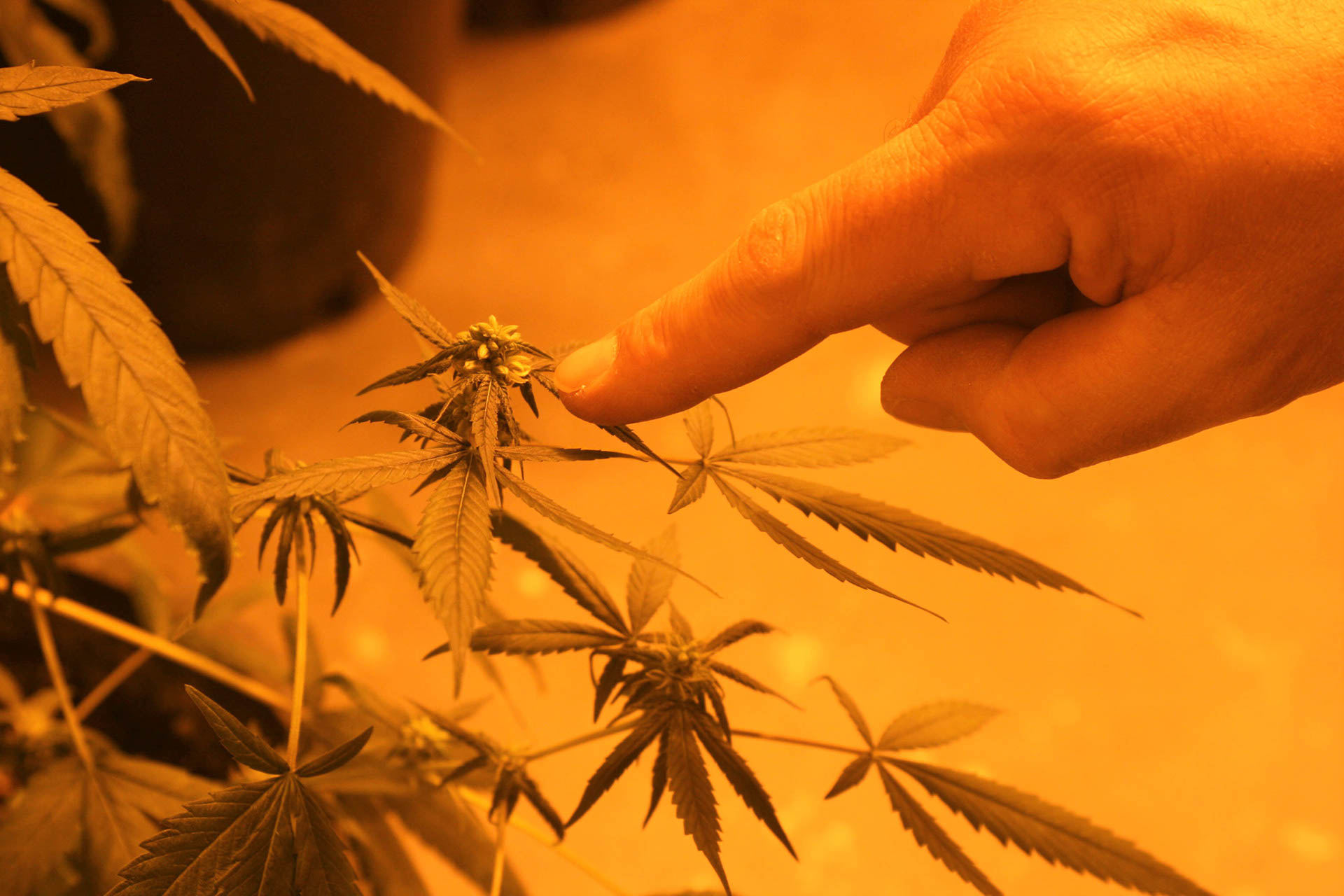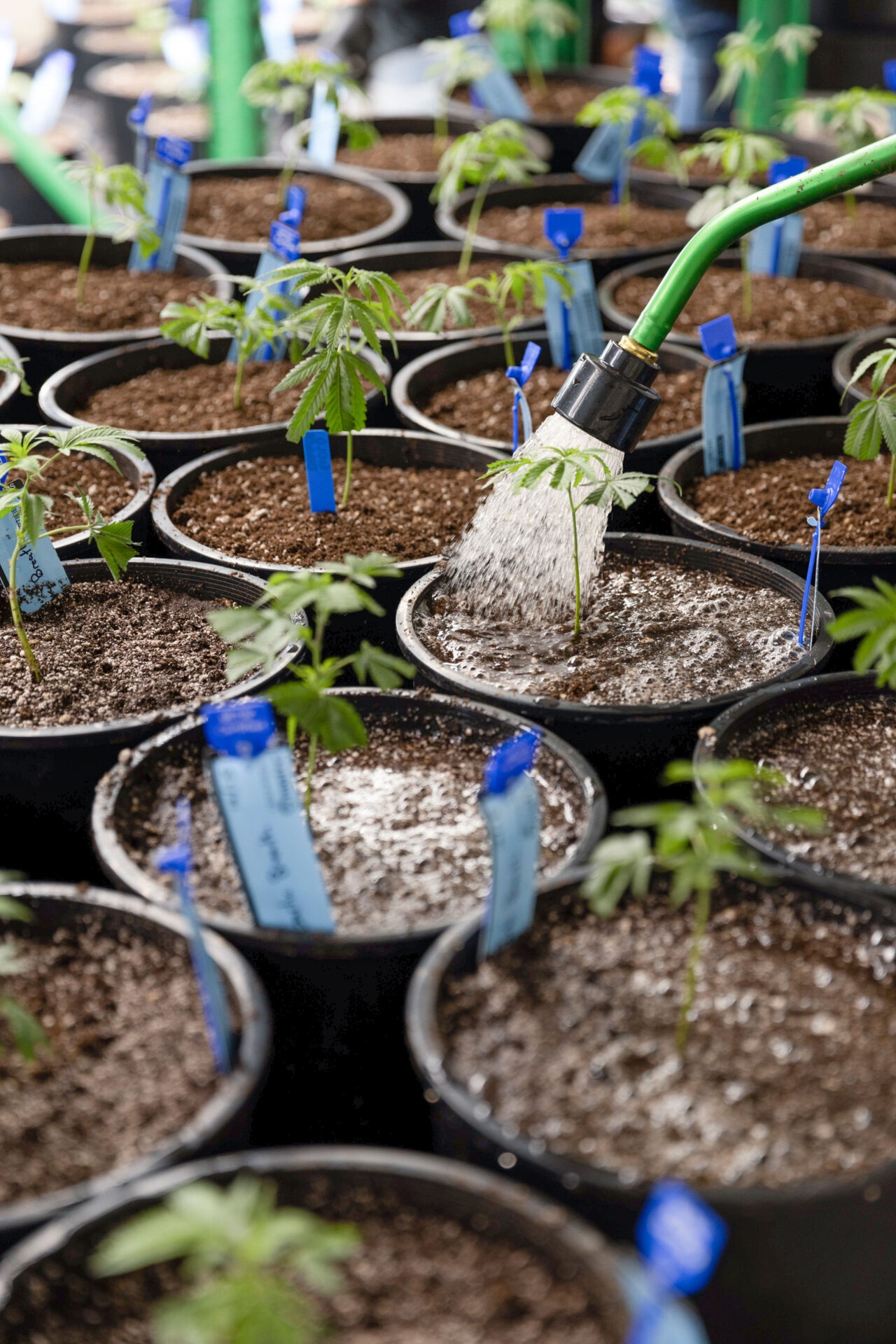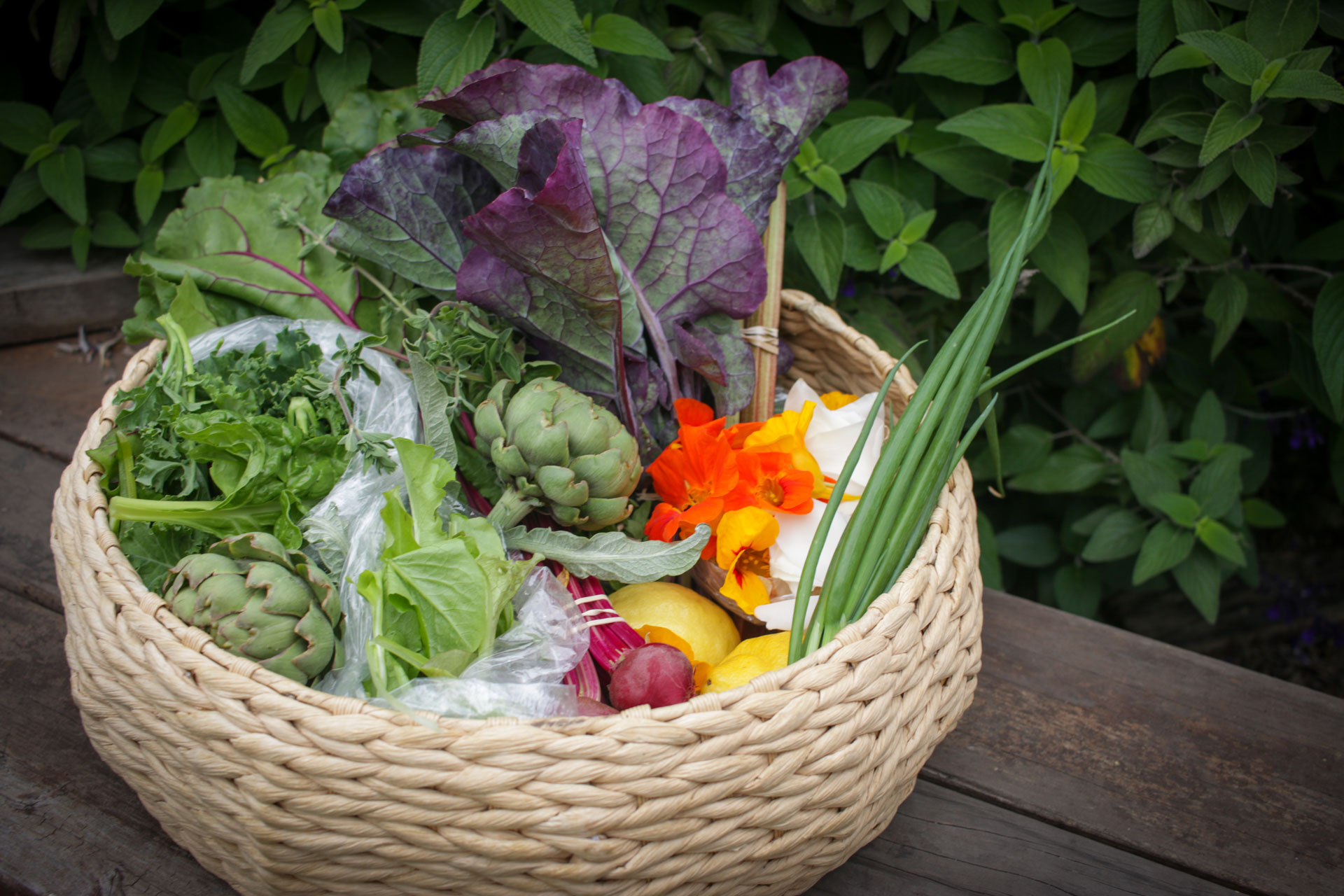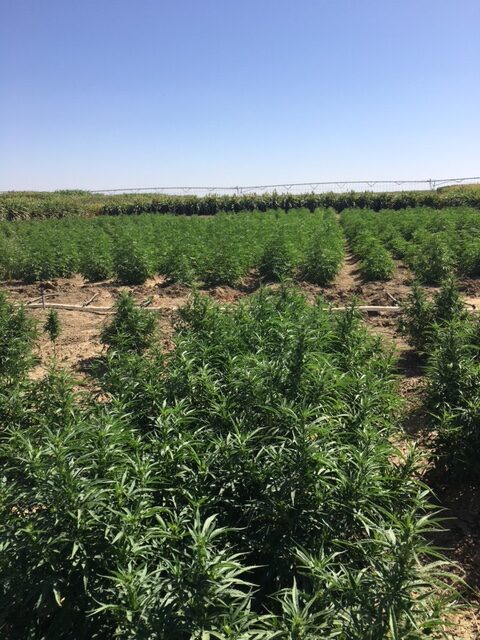As larger commercial growing operations move into hemp as a rotational crop, breeder James Knox of KLR Farms offers some advice to boutique growers for selecting the right variety and competing in an increasingly crowded field.
KLR Farms has hemp hybridizing, research and development facilities, and hemp-seed production farms in several locations in Oregon, and more recently, a collaboration on a six-acre indoor grow facility in Illinois. It recently partnered with a distributor in Tennessee.
Choosing Varieties
Knox said the first step is to select the right variety. He said growers should consider the following when selecting a variety:
- Understand your region and your growing season. Instead of picking the prettiest varieties, choose varieties suited for your location.
- If you tend to have a wet fall in your region, choose mold-resistant strains.
- You want a variety that will survive the end of the season, whatever that means weather-wise in your region. In California, harvest is in November, or even later. In Oregon and parts of Washington, harvest is generally in October – affectionately called “croptober.” It’s often an October harvest even for plants labeled as early flowering. Knox said.
In 2019, Knox harvested his personal research and development, a 25-acre in-ground plot, from Oct. 18 through Nov. 11. He said his plants were still putting on mass and girth through October.
Knox sold seed for 200 to 300 acres of hemp to California farmers.
“They have more light, more heat and a longer growing season, especially in SoCal. They were literally harvesting into December,” Knox said.
Plant genetics are studied in depth at Knox’s operation. He has a PhD plant geneticist on staff. Feminized-seed plants are not genetically modified, Knox pointed out.
In 2019, KLR Farms launched its offerings of hemp seed to the open market – nationally and internationally. They offer four different Sativa-dominant hybrids and five different Indica-dominant hybrids. One of the Indica varieties is an auto flowering/auto hemp. This year they are also releasing three different Sativa hybrids that are dual-use fiber/oil varieties.
Sativa
Tall plants with smaller, thinner, finger-like leaves. Takes longer to flower than Indica, generally 60-90 days outdoors. Use drip tubes or tape to water. Originated in Africa, Central America, Southeast and some parts of Western Asia.
Indica
Dense, bushy plant with wide leaves. Shorter time to flower, usually 45-60 days. Good choice for indoor growing, but can also be grown outdoors. Use drip tubes or tape for watering. Originated in Afghanistan, India, Pakistan and Turkey.
Auto flowering
KLR is collaborating with Sovereign Fields, located in Southern Oregon, on their offering of this variety. This type of hemp is day neutral and flowers without shorter daylight.
Fiber/Oil Dual-use Hemp
This is something new on the market. In 2020, KLR Farms is introducing three new varieties. Plant at high density. Knox recommends planting 5,000-20,000 seeds per acre, typically drilled into the row. Overhead water, such as cannons or pivots works with this type. These plants grow 9-14 feet tall. Harvest at 4-6 weeks into flowering by combining the top 3-4 feet, which is basically one big flower head. Cut the rest of the plant and lay in windrows.
Use the top for oil and the rest for fiber. Some uses to consider for the fiber is dried and chopped for animal bedding, garden mulch, or use as green manure. Bag and sell it, or use it on your own farm.

Hemp Compounds and Components
There is more to hemp than CBD. There are many other compounds and chemicals to consider when choosing varietal strains.
THC Is the main psychoactive compound that produces a “high.” Hemp grown for CBD oil is tested before harvest to make sure THC is .3 percent or less.
CBD The non-psychoactive known for reducing pain, nausea, easing migraine headaches and preventing seizures.
CBN Cannabinol is touted to ease symptoms of neurological conditions and muscle stiffness.
THCA Tetrahydrocannabinol acid is similar to THC, but without the psychoactive effects. THCA may relieve inflammation from autoimmune diseases and arthritis. It may also reduce the symptoms of ALS and Parkinson’s disease.
CBG Cannabigerol may help with anxiety, post-traumatic stress disorder, depression and obsessive-compulsive disorder. This compound is beginning to get more attention, but the market is not yet mature, Knox said. If CBG is something you want to shoot for producing, Knox suggests planting no more than 30 percent of your acreage in CBG-rich varieties.
Terpenes are another natural compound found in cannabis. They affect the way the plant smells.
KLR Farms best-known variety is KLR #1, or CherryLimeadeHemp, named for its “pungent and complex sweet cherry, with strong essence of lime and skunky pine.” It’s a Sativa-dominant hybrid and one of KLR’s best all-around field producers. An aggressive grower, it’s got strong stems and stocks to hold up well outdoors in wind and weather, but also grows well under lights. It’s a bit later to flower than some of KLR’s other varieties, but flower biomass is heavy at end of season. If bud rot is a problem in your region, with wet fall weather or high humidity, this is a very mold-resistant variety. Raw flower biomass consistently tests at a 16-22 percent total CBD value.

propagation houses.
Advice on Growing Hemp
“Go vertical,” Knox said.
That means buying and using your own equipment to plant and harvest. Have your own dryer, storage facility and oil extractor, or be prepared to ship it out to a processor. Plan ahead for labor needs and costs. Have your fertilizer plan lined up. In addition, he offered the following suggestions:
- Know the origin of your seed. Buy good feminized seed.
- Test plant tissue throughout the season to monitor the chemical values.
- Try to be in control of the crop and process from start to finish, without outsourcing if possible.
Big farmers are perched and ready to enter the hemp industry, Knox predicted.
“They’ll use hemp as a crop rotation. They’ll treat and sell it as a large commodity for companies looking to add CBD to their product line,” Knox said.
If Knox’s prediction proves correct, that will leave smaller, craft farmers scrambling to find their own value-added market niche. Knox points to the success of Oregon micro-breweries as a business model to emulate.

To help the industry, Knox said, “We have to increase the CBD amount per volume and bring the price down.”
Feminized seed is the best investment. Open-pollinated seed will contain males. Males produce pollen. Pollen blows on the wind and can make other growers’ hemp seed out, which ruins the crop.
“Sixty-six percent of the chemical (CBD) is taken away because of that seed,” Knox said. “You do not want a seeded-out hemp crop, ever. Feminized seed is the most reasonable and responsible.”
Be a good farmer. Know, or learn how to manipulate water and fertilizer. You may need to coax plants into early flowering if the season is looking questionable, weather-wise.
Spend the few dollars on a current copy of the Farmer’s Almanac. Read it, especially the seasonal weather forecast.
“It’s as accurate as any forecast out there,” Knox said.
Pay attention to what grows well during the years that hemp doesn’t grow well. For example, 2019 was a bumper crop for grapes, but not such a great crop year for many hemp growers. This year is forecast as another good grape year. That means history is pointing towards another potentially challenging year for hemp farmers.
“It’s always important to look at past years’ historical crop date. Look at the past three years,” Knox said. “Pay attention to all of those commercial crops grown in your region. Kind of gage your year off of it.”
James Knox hesitates to use the word “male” at all when describing the process of feminizing seed, but, in simple terms, he explains it this way: “You take a female and turn it into a she-male.”
To create feminized seeds, the plants that produce the pollen, and the seed-bearing plants are both female. To create this pollen-producing “she-male” (which isn’t really a male at all, but a female coaxed into creating male flowers,) the plant breeder takes a female pollen donor plant and sprays it with a hormone-inducing solution. A popular solution with hemp breeders is colloidal silver – a suspension of pure silver particles, or ions, in distilled water. The breeder sprays the plant at the onset of flowering. KLR does it this way, but Knox noted there are many ways to achieve reversals. Some hemp varieties can take up to three weeks to start producing male flowers, or pollen sacs.
The hemp breeder then uses the pollen that the hormone-induced female donor produces to fertilize the flowers of female receiver plants. The receivers don’t get the hormone treatment. The seeds the receivers produce have no male chromosome, so all plants grown from such seed are female – or at least they are 99 percent of the time. There is always a chance of a hermaphrodite cropping up in feminized seed, but when the seed is produced correctly, it’s very rare, Knox said.






